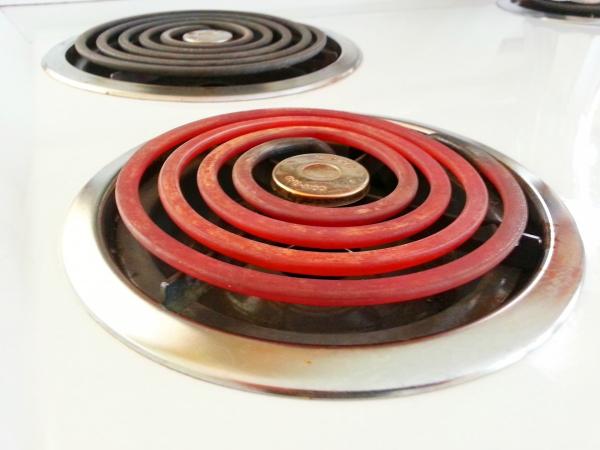Perceived Pain Drives Body’s Automatic Nervous System Response

According to a new IRP study, the body’s automatic response to painfully high temperatures is driven more by how much pain a person feels than by how high the temperature is.
Everyone has a different pain threshold; a plate that’s too hot for one person to touch might be easily handled by someone else, for example. Now, IRP researchers have found the first evidence that a person’s sensation of a painful temperature more strongly influences the body’s automatic response to it than does the actual temperature.1
When a dangerously hot or cold object comes into contact with the skin, it triggers a response from the body’s autonomic nervous system (ANS), which manages bodily functions that are beyond our conscious control, such as breathing and digestion. While scientists have thoroughly studied how the ANS reacts to pain, they are still debating whether the physical properties of a painful event have a larger influence on that response than how much pain the event causes a person. In other words, some contend that the body will always react more strongly to a 200-degree object than a 150-degree object, while others believe the autonomic response will be more profound when someone experiences more pain, regardless of the actual temperature involved.
“In the field of psychology, it is widely known that our minds can affect our bodies,” says IRP investigator Lauren Atlas, Ph.D., the study’s senior author. “That has been shown in the areas of learning and emotion, so we wanted to test that same idea in the context of pain.”
Dr. Atlas’ study was the first to separate the influences of temperature and perceived pain on ANS responses. To accomplish that, her team used two different experimental tasks and measured two components of the ANS response: pupil widening, or ‘dilation,’ and the skin conductance response, an increase in the skin’s ability to conduct electricity caused by increased sweating.
In one of the experimental tasks, the researchers exposed the participants to temperatures tailored to the subjects’ individual sensitivities to heat, and, on every trial, the experimenters asked them how painful the stimulus was. On the second task, every participant experienced the same range of temperatures and reported whether each was painful or not. Participants who categorized a temperature as painful subsequently rated how painful it was to them, while those who judged a temperature to not be painful reported how hot it felt to them.
Statistical analyses performed by Dr. Atlas’ team revealed that when a temperature was not classified as painful, the participants’ ANS responses were stronger when the temperature was higher. However, when a temperature caused pain, ANS responses were more closely related to participants’ personal judgments of how much pain the temperature caused them than to the temperature itself.
“If you look at two trials with the same temperature, a trial when a participant called that stimulus more painful elicited a greater autonomic response than the same exact temperature if he or she perceived it as less painful,” Dr. Atlas explains. “So, it’s more about how you perceive the temperature — the temperature itself is the same in those two trials, but when you call it more painful you have a stronger reaction.” Similarly, she says, if a participant judged two different temperatures to be equally painful, “we would expect to see the same physiological response.”
While the current study examined correlations between pain and the ANS response, the next step for this research will be to definitively prove that greater pain causes a stronger bodily reaction, as opposed to a greater ANS response causing people to feel more pain. Dr. Atlas plans to pursue similar experiments using different types of pain-causing events, as well as other kinds of negative and positive experiences. She is also curious whether the way the ANS reacts to pain differs for patients who experience chronic pain.
“This study shows that a person’s conscious experience of a stimulus is most important for determining how his or her body responds,” Dr. Atlas says. “From that, we can try to use careful experimental techniques to understand the different factors that contribute to individuals’ conscious experiences of pain.”
Subscribe to our weekly newsletter to stay up-to-date on the latest breakthroughs in the NIH Intramural Research Program.
References:
[1] Pain or nociception? Subjective experience mediates the effects of acute noxious heat on autonomic responses. Mischkowski D, Palacios-Barrios EE, Banker L, Dildine TC, Atlas LY. Pain. 2018 Apr;159(4):699-711. doi: 10.1097/j.pain.0000000000001132.
Related Blog Posts
This page was last updated on Tuesday, May 23, 2023
